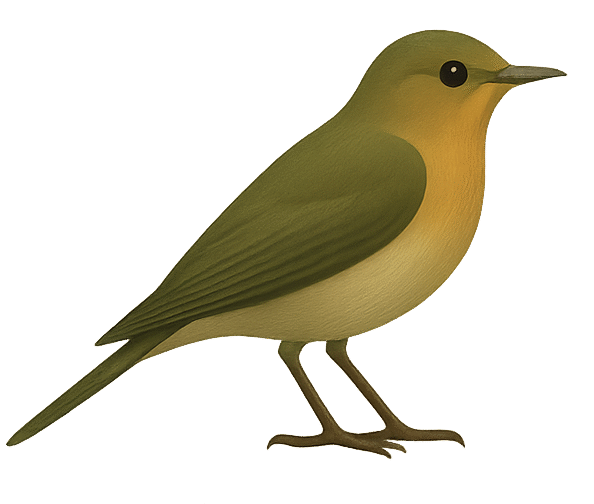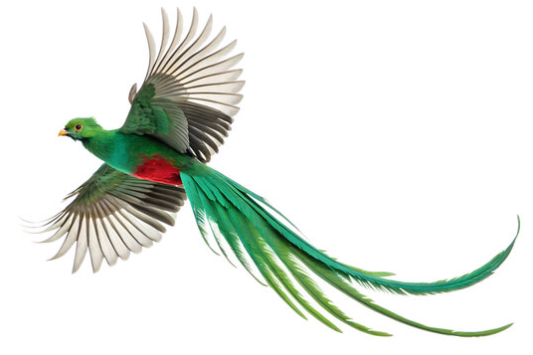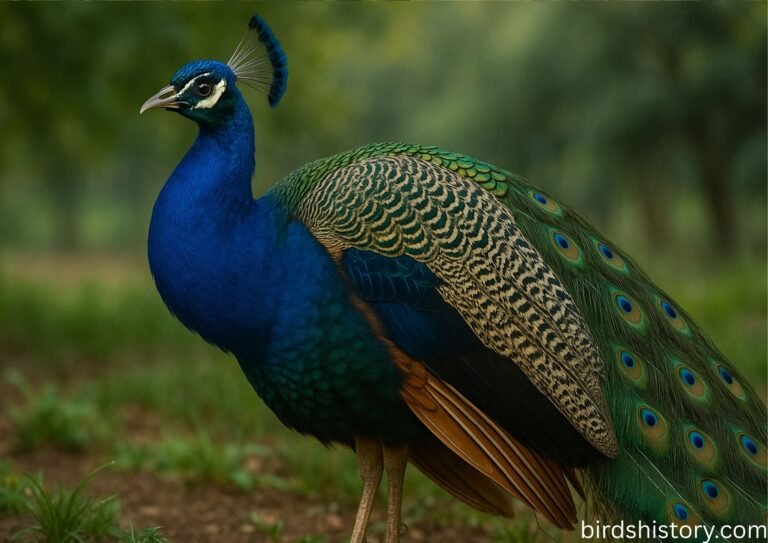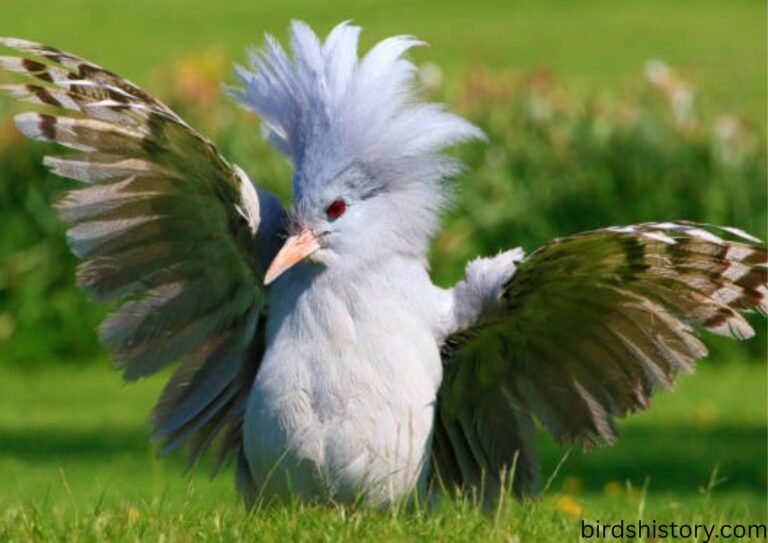The Resplendent Quetzal: Jewel of the Cloud Forest and Symbol of Freedom
Introduction
The Resplendent Quetzal (Pharomachrus mocinno) is one of the most breathtaking birds on Earth, revered for its dazzling emerald-green plumage, crimson breast, and extraordinarily long tail feathers. Native to the cloud forests of Central America, this bird is not only a natural wonder but also a cultural icon, deeply embedded in the myths and history of Mesoamerican civilizations like the Maya and Aztecs.
Why it’s fascinating:
- Males grow 3-foot-long tail feathers during mating season, creating a shimmering train as they fly.
- Considered a symbol of freedom and divinity—legend says it dies if caged.
- Its iridescent green color isn’t from pigment—it’s structural, created by light refracting through melanin stripes in its feathers.
Fun Fact: The quetzal’s name comes from the Aztec word quetzalli, meaning “precious” or “sacred,” and it’s the namesake of Guatemala’s currency.
Must Read: https://birdshistory.com/owl-finch/
The Resplendent Quetzal Taxonomy / Classification
- Common Name: Resplendent Quetzal
- Scientific Name: Pharomachrus mocinno
- Family: Trogonidae
- Order: Trogoniformes
- Class: Aves
The quetzal is one of five species in the Pharomachrus genus and is closely related to trogons, a group of colorful, fruit-eating birds.
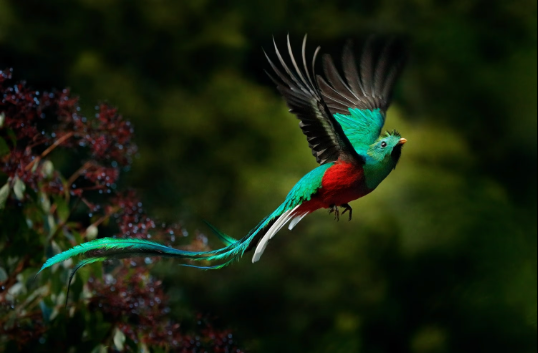
The Resplendent Quetzal Physical Description
The Resplendent Quetzal is a visual marvel:
- Size: 14–16 inches (body), with males’ tail feathers extending up to 3 feet.
- Coloration:
- Males: Iridescent emerald-green body, crimson belly, golden-green crest, and yellow beak.
- Females: Duller green, gray breast, shorter tail, and blackish beak.
- Unique Traits:
- Fragile skin: Feathers detach easily to escape predators.
- Weak feet: Adapted for perching, not walking.
Must Read: /the-kakapo/
Habitat and Range
- Location: Cloud forests of southern Mexico to western Panama, with key populations in Guatemala and Costa Rica.
- Elevation: 4,000–10,500 ft, where cool, misty conditions prevail.
- Preferred Habitat: Dense, moss-covered trees—especially near wild avocado (Lauraceae) groves.
The Resplendent Quetzal Diet and Feeding Habits
- Primary Food: Wild avocados (aguacatillo), laurel fruits, and berries.
- Hunting Style: Plucks fruit mid-flight or hovers like a hummingbird.
- Ecological Role: Swallows fruits whole, dispersing seeds across forests.
Behavior and Lifestyle
- Solitary but pairs during breeding (March–August).
- Vocalizations: Melodic keow-kowee calls; males “boom” to attract mates.
- Nesting: Uses rotting tree cavities, often reused yearly.
The Resplendent Quetzal Reproduction and Lifespan
- Breeding Season: March–June, synchronized with fruit abundance.
- Eggs: 1–3 pale blue eggs, incubated by both parents.
- Lifespan: Up to 20–25 years in the wild.
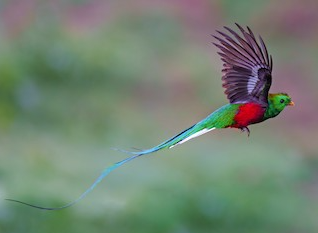
Predators and Threats
- Natural Predators: Ornate hawk-eagles, toucanets (target eggs).
- Human Threats:
- Deforestation (90% habitat loss in some areas).
- Illegal pet trade (despite cultural taboos).
The Resplendent Quetzal Conservation Status
- IUCN Status: Near Threatened (population: ~50,000).
- Protection Efforts:
- Protected reserves in Costa Rica (Monteverde) and Guatemala.
- Artificial nest boxes to combat habitat loss.
Interesting Facts About The Resplendent Quetzal
- National Symbol: Featured on Guatemala’s flag and currency.
- Mythology: Linked to Quetzalcoatl, the feathered serpent god.
- Legend: Its red breast comes from the blood of a Mayan hero.
Conclusion
The Resplendent Quetzal is a living emblem of ecological and cultural heritage. Protecting its cloud forest home safeguards countless species and preserves a legacy of ancient reverence. Through ecotourism and conservation, we can ensure this “rare jewel bird” continues to inspire awe.
Also Read About: /vogelkop-superb-bird-of-paradise/
FAQs About The Resplendent Quetzal
1. Why is the quetzal called “resplendent”?
For its radiant, iridescent feathers that shimmer in sunlight.
2. Can quetzals be kept as pets?
No—they die in captivity, symbolizing freedom in Mesoamerican culture.
3. Where’s the best place to see quetzals?
Costa Rica’s Monteverde Cloud Forest or Guatemala’s Los Quetzales National Park.
4. How do quetzals help the environment?
They disperse seeds of laurel trees, sustaining forest ecosystems.
5. Why are quetzals near threatened?
Deforestation and climate change degrade their high-altitude habitats.
